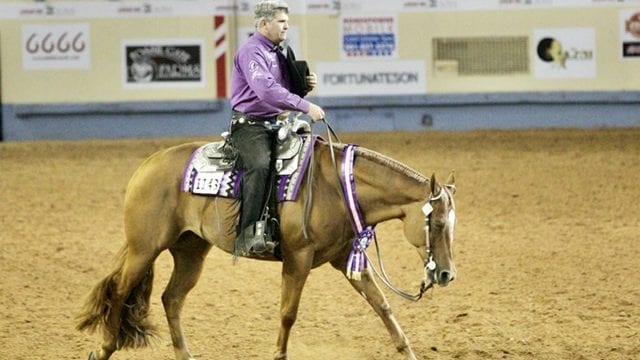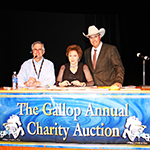Whether you are starting a young one or working on a steady veteran horse, changing leads can be tricky. Changing leads not only makes up an entire class on its own in the western riding, but the maneuver is also often included in multiple other all-around events.
A lead change can be executed in many different styles – fast or slow while making a circle or between cones. With a lead change being a part of so many classes, creating a lead change that is easy for you and your horse to accomplish is essential.
We spoke with top professionals Jason Martin, Deanna Searles, Troy Lehn, and Brad Ost for some tips on lead changes. All mentioned specific activities that are key, both in the early and veteran stages. It is essential to create a strong foundation when working on lead changes. It is also pertinent to keep a veteran horse in its prime, conditioned, and ready to perform at its highest level.
Working With Young Horses
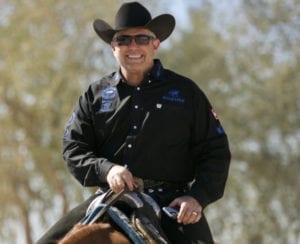 Jason Martin: My favorite exercise to practice on a young horse is to wait for a stride or two after the lead change and break down to the walk. After I break down to the walk, I pick up the lope and repeat this sequence repeatedly. Your horse will then start to anticipate that you will break to a walk after the lead change. This allows you to teach the horse to push through the lead change and then take a breath and return to neutral.
Jason Martin: My favorite exercise to practice on a young horse is to wait for a stride or two after the lead change and break down to the walk. After I break down to the walk, I pick up the lope and repeat this sequence repeatedly. Your horse will then start to anticipate that you will break to a walk after the lead change. This allows you to teach the horse to push through the lead change and then take a breath and return to neutral.
 Deanna Searles: We do exercises such as two-tracking at the lope and the trot to teach them to yield off your legs and reins. We also practice going faster and executing longer strides so that they become comfortable at a different pace.
Deanna Searles: We do exercises such as two-tracking at the lope and the trot to teach them to yield off your legs and reins. We also practice going faster and executing longer strides so that they become comfortable at a different pace.
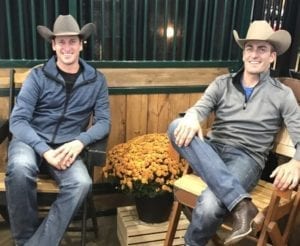 Brad Ost: When working with the young ones, I’d say to stay in draw reins or a snaffle until they are ready to do it independently. Don’t be afraid to change many leads as long as it’s going in a positive direction.
Brad Ost: When working with the young ones, I’d say to stay in draw reins or a snaffle until they are ready to do it independently. Don’t be afraid to change many leads as long as it’s going in a positive direction.
Working With Veteran Horses
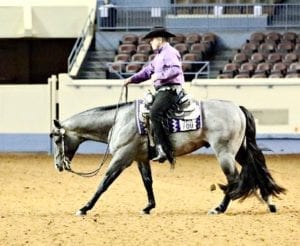 Jason Martin: My most common exercise on an older horse is to work on the crossovers. This is an exercise that teaches them to stay straight and not lean into or anticipate dropping into the direction of the new lead change. I come across the middle and find something perfectly straight in front of me. I try to stay on that line before, during, and after the change.
Jason Martin: My most common exercise on an older horse is to work on the crossovers. This is an exercise that teaches them to stay straight and not lean into or anticipate dropping into the direction of the new lead change. I come across the middle and find something perfectly straight in front of me. I try to stay on that line before, during, and after the change.
Then, I stay on that line until I get to the fence, and whatever way the horse anticipates going, I then go the opposite. Then, I wait for him to choose to ensure I do the opposite. Most of the time, this will make you counter canter. My goal is to be able to go across the pen and change leads in a perfectly straight line and have my horse run straight into the fence with his nose waiting on me to tell him what direction to go.
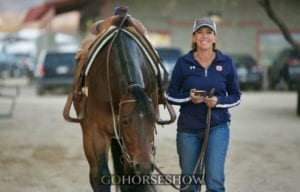 Deanna Searles: With the veterans, we practice the same two-tracking exercises that we do when they are young and add in making circles around the cones of a line. We make two circles around the cones to be in a position to change in either direction (down/up the line). Circling the cones helps them get ready to perform the line no matter which pattern is asked to show.
Deanna Searles: With the veterans, we practice the same two-tracking exercises that we do when they are young and add in making circles around the cones of a line. We make two circles around the cones to be in a position to change in either direction (down/up the line). Circling the cones helps them get ready to perform the line no matter which pattern is asked to show.
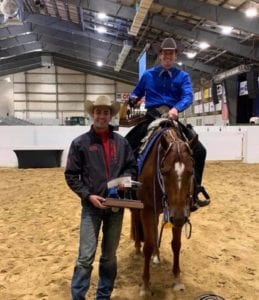 Troy Lehn: I think the biggest thing for an older horse is to keep its routine the same. It would help if you made them wait to change leads and make sure they aren’t leaning when changing leads. It is important to remember with the older ones, you’re not trying to reinvent the wheel. Preserve the good.
Troy Lehn: I think the biggest thing for an older horse is to keep its routine the same. It would help if you made them wait to change leads and make sure they aren’t leaning when changing leads. It is important to remember with the older ones, you’re not trying to reinvent the wheel. Preserve the good.
***
Although changing leads can be complicated at times, it ultimately can turn into a fancy and exciting maneuver that helps you show off in the show pen. The early and veteran stages of changing leads differ in some ways, but both are critical for bringing out the best lead change your horse has to offer.
CLICK HERE to purchase or rent training videos with more in depth information on changing leads and showing your horse in western riding.


